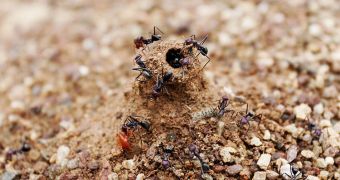Over the past few years, robotics experts have been working on developing intelligent robots, capable of conducting a wide array of missions. Right now, scientists based at the Georgia Tech University are working on emulating ants' teamwork and snake movements in two new classes of robots.
These machines would be particularly well suited in search-and-rescue operations, since they would be able to navigate difficult terrain and other obstacles, and act in an organized manner. Swarms of small robotic explorers could make their way through debris following an earthquake, for example.
The robots could also be used for greener jobs, such as for example producing advanced solar cells, or improving current environmental monitoring performances. In addition, scientists also see a future where the machines would contribute to environmental remediation as well.
Surveillance and reconnaissance are also applications where an agile, fast-moving robot would collect a huge amount of details about an enemy without getting caught. Outfitted with several cameras, these units could collect large amounts of detail during a single pass through the enemy lines.
Georgia Tech professor David Hu, the leader of the development team, says that the robots currently under development at the university will not look like much, since the group is not placing any value on their aesthetic value.
The main goal the team has is to convert the highly efficient movement of snakes into mechanical energy efficiency for their robots. “The machine must be flexible enough to move over uneven surfaces, yet not so big that it’s restricted from tight spaces,” says Jason Maderer.
“It might also be required to climb slopes of varying inclines. Existing robots can do many of these things, but the majority require large amounts of energy and are prone to overheating,” adds Maderer, a writer at Georgia Tech.
The research group is currently focusing its studies on fire ant swarms, in order to capture the way in which the tiny insects work together as a team. For example, this species has mastered the secret of traveling on water, even if individual fire ants cannot swim.
They come together into a ball, which then floats on water, carrying the queen, and preventing it from getting wet. Translated into robots, this would result in machines that can easily work together to navigate difficult terrain, and exceed all obstacles in their paths, Clean Technica reports.

 14 DAY TRIAL //
14 DAY TRIAL //